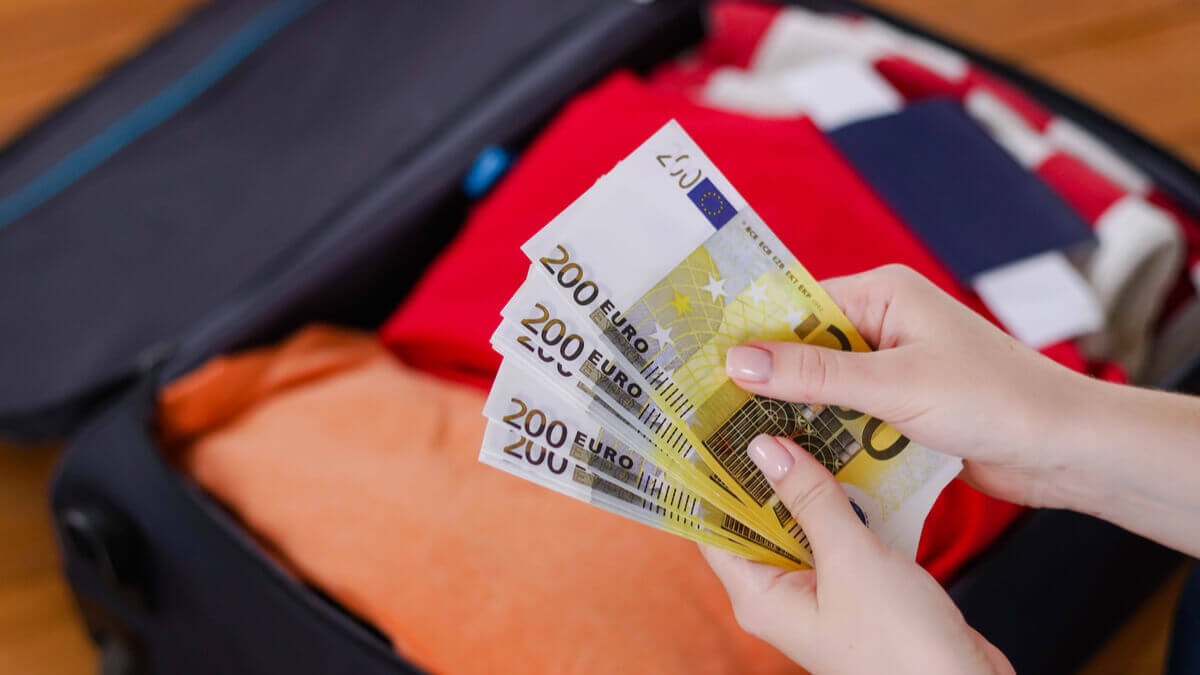What are the best gap year programs? [2024]
Explore some of the best gap year programs and find the right choice for you

If you’re planning to vacation in Europe this year, you’ll need to get your travel spending sorted.
But how much cash should you bring to Europe? Read on to find out, as we’ve put together a useful guide on Europe travel and how much cash to bring.
And if you’d prefer to travel cash-free, we’ll introduce you to the ideal travel companion - the Wise card. It offers low-cost spending and ATM withdrawals in 150+ countries, including Europe.
If you prefer dealing in cash, then by all means get some euros out before your trip. But actually, you’ll find that debit and credit cards are widely accepted in most European cities.
Paying by card can be easier and more convenient, without the potential security risk of carrying cash around you. You’ll just need to check your card provider’s fees for spending abroad.
But the good news is that many travel credit cards for Europe come with no foreign transaction fees. You might even get points, air miles or cashback for spending. You can also keep track of your spending on a handy mobile app for some cards.

Cash can be a hassle, whether it’s the inconvenience of converting currency or the safety risks of carrying it around.
So it could be a better idea to use a travel card instead. The Wise card is a great alternative to cover your needs when traveling to Europe. It’s contactless and works in 150+ countries, including the UK and across the EU.
Order your Wise card for a one-time fee of $9 and you’ll get:
Wise is a money service business, offering a multi-currency account, international money transfer services and a debit card.
Please see Terms of Use for your region or visit Wise Fees & Pricing: Only Pay for What You Use for the most up-to-date pricing and fee information.
In order to work out how much travel money you’ll need for your European getaway, it’s useful to know how much things cost there.
Below is a look at the average prices for a hotel room, evening meal, travel and a tourist attraction in five major European cities.
The table¹ gives you an idea of how much you’d spend on a 2-night break in Europe, in USD. This can help you work out the average costs for however long you’ll be staying.
| Paris, France | Berlin, Germany | Athens, Greece | Rome, Italy | Barcelona, Spain | |
|---|---|---|---|---|---|
| Hotel room for 2 nights | $490 | $477 | $164 | $419 | $436 |
| 3-course meal + wine for 2 (x 2 nights) | $111 x 2 | $122 x 2 | $52 x 2 | $89 x2 | $83 x2 |
| 48-hour travel card | $23 | $20 | $15 | $14 | $19 |
| Top tourist heritage attraction | $15 | $0 | $23 | $27 | $30 |
| Total | $750 | $741 | $306 | $638 | $651 |
It all depends on where you’re going and what you plan to do during your trip. As you can see from our travel costs table above, some European cities are cheaper or more expensive than others.
As a general rule, though, it’s a good idea to budget at least $100 a day for your vacation. This is just spending money, as hotel costs are likely to have been either paid in advance or settled by card when you check out.
Here are just a few of the main things you should budget for:
- Food and drink - this includes meals and snacks, coffees and evening drinks
- Travel - including the cost of airport transfers, local buses, trains and taxes, or a travel card covering the length of your trip.
- Entry fees for attractions - for example, museums, art galleries and heritage attractions you want to visit.
If you’re flying to Europe all the way from the US, it’s unlikely that you’ll be staying just a couple of nights.
So, you might be wondering - how much cash should I bring on a three-week vacation to Europe?
You can use the costs in our table above, and the $100-per-day rule of thumb, to calculate how much money you’ll need for your trip.
So for a three-week trip, you’ll be needing over $2,000. But it really does depend on what country you’re traveling to and what you plan to do, eat and drink while you’re there.
You might be focused on how much money you actually need to cover your spending on a European vacation.
But there’s another factor to consider - how much cash you’re actually allowed to take out of the US and into Europe. Here are the rules for each country:
- Taking cash out of the United States - if you’re taking more than $10,000 out of the country, you’ll need to declare it. You can do this by filing a FinCEN Form 105 online with the U.S. Customs and Borders Protection.²
- Bringing cash into Europe - if you’re bringing more than €10,000 (or the equivalent in another currency) into the European Union, you must declare it to the customs authorities in the country you’re entering. You can do this via the EU cash declaration form.³
If you think you will be carrying anywhere near $10,000 with you, there are a few things to consider before you travel.
The first is security, as it’s risky to carry this much in cash on your person. It could be preferable to use a debit or credit card to spend instead, or to send money using a transfer service like Wise - if the cash is for a purchase, for example.
If you need this much money because you’re staying in Europe for a while, you might want to look into opening a European bank account instead.
So, how much cash should you bring to Europe? The short answer to this is - it depends on where you’re going and what you’re doing.
But hopefully after reading this guide, you’ll have a better idea of costs in European cities and how much to budget for each day of your trip.
And remember, if you take the Wise card with you, there’s no need to carry cash around with you at all.
Have a great vacation!
Sources used for this article:
Sources checked on 25-Jul-2023.
*Please see terms of use and product availability for your region or visit Wise fees and pricing for the most up to date pricing and fee information.
This publication is provided for general information purposes and does not constitute legal, tax or other professional advice from Wise Payments Limited or its subsidiaries and its affiliates, and it is not intended as a substitute for obtaining advice from a financial advisor or any other professional.
We make no representations, warranties or guarantees, whether expressed or implied, that the content in the publication is accurate, complete or up to date.

Explore some of the best gap year programs and find the right choice for you

Understand what a gap year is, what are the pros, cons and opportunities.

Belize can be a safe country to visit, but make sure to be aware of possible scams.

Costa Rica can be a safe country to visit, but make sure to be aware of possible scams.

Have you ever longed quit your day job to travel the world in search of adventure? Amanda Machado can tell you what that's really like.Amanda is a...

Wondering where to go on your next vacation? Here are the 10 most popular cities around the world. According to a recent report published by Statista, some of...